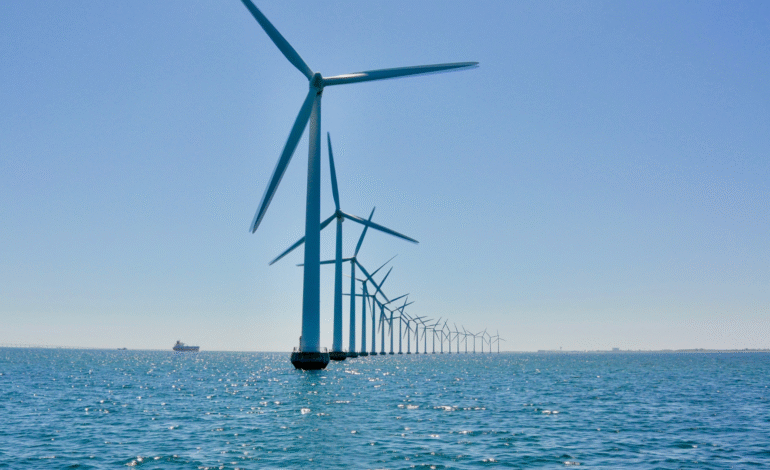Poland’s Energy Shift: From Coal to Baltic Wind Power

Once heavily dependent on coal for electricity generation, Poland—a country of nearly 36 million and the current holder of the European Union’s rotating presidency—is undergoing a substantial transformation in its energy landscape. Long the backbone of national industry and employment, coal has gradually become less economically viable. Many of the country’s mines, especially in the southern regions, are no longer profitable, while existing infrastructure is aging and increasingly inefficient.
Under the leadership of Prime Minister Donald Tusk, the Polish government has launched a structured, phased plan to wind down coal operations in the south. This shift is not merely about energy—it reflects a larger strategy to diversify the economy, embrace innovation, and align with climate objectives established at both national and EU levels.
As coal communities in the south confront the realities of change, the northern coast of Poland—strategically situated along the Baltic Sea—is emerging as a new frontier of energy growth and innovation.
Northern Poland Rises as a Clean Energy Hub
Northern Poland is experiencing an economic and infrastructural renaissance. Thanks to favorable geographic conditions and access to the Baltic Sea, this region has become the epicenter of Poland’s renewable energy ambitions. Among its most prominent projects is Baltic Power, a significant offshore wind farm located 23 kilometers off the coast near Choczewo and Łeba.
Baltic Power is a joint initiative between Polish energy giant ORLEN and Canada’s Northland Power. With a planned capacity of 1,140 megawatts, the wind farm is expected to provide electricity to approximately 1.5 million households. It stands as one of the most advanced renewable infrastructure developments in the Polish Economic Zone and is anticipated to remain operational for up to 30 years.
Ignacy Niemczycki, Deputy Minister in the Chancellery, addressed a select group of Brussels-based journalists aboard the Jantar passenger vessel. He emphasized the strategic significance of the Baltic Power project, noting that renewables will be crucial for Poland’s evolving energy mix. However, he also stressed the importance of nuclear power and gas to ensure stability and resilience in the national grid.
A Balanced Energy Mix Anchors National Strategy
While Poland is rapidly scaling up renewable energy, the government is taking a balanced approach to its future energy portfolio. Recognizing the limitations of intermittent energy sources such as wind and solar, policymakers have committed to incorporating nuclear energy and natural gas to maintain grid reliability.
According to Niemczycki, the overarching goal is to design a system where nuclear energy becomes the baseline, supported by renewables and gas to provide flexibility and ensure uninterrupted power. This triad—nuclear for consistency, renewables for sustainability, and gas for adaptability—is central to the long-term vision of energy transformation.
Such diversification is especially critical in a country with growing energy demands and strategic economic goals. A stable and resilient grid is essential not only for industrial development but also for meeting Poland’s obligations under EU climate targets.
Nuclear Power Projects Strengthen Energy Security
Poland’s nuclear energy ambitions are now moving forward in earnest. Plans for the country’s first nuclear power station—also on the northern Baltic coast—were initiated under the previous Law and Justice (PiS) government. These plans are now being implemented by the current coalition government, indicating cross-party consensus on the strategic value of nuclear energy.
Construction of the plant is seen as a landmark moment in Poland’s energy journey. Moreover, the government is actively considering a second nuclear site, further reinforcing the centrality of nuclear power in future energy planning.
Beyond large-scale nuclear facilities, Poland is closely monitoring international developments in Small Modular Reactors (SMRs). These compact, scalable nuclear units—capable of generating up to 300 MW per unit—are being tested in countries like Canada. If proven successful, SMRs could complement Poland’s larger nuclear infrastructure by delivering targeted, localized energy solutions.
Niemczycki indicated that SMRs could play a significant role within the next 15 years, helping Poland transition smoothly from coal without compromising on reliability or efficiency.
Economic Revitalization Through Green Energy Investment
Poland’s shift from coal to cleaner energy sources is as much an economic reinvention as it is an energy policy. The development of renewable and nuclear infrastructure is revitalizing northern communities, creating new jobs, and attracting foreign investment.
Projects like Baltic Power are catalyzing the emergence of a green industrial ecosystem. New facilities and support infrastructure—such as ports, storage units, and transport systems—are being developed to support turbine assembly, installation, and long-term maintenance. These investments are breathing new life into regions that were once peripheral to Poland’s economic growth.
Moreover, international partnerships, like the one with Northland Power, are facilitating knowledge transfer and technical collaboration, enabling Poland to benefit from global best practices. Such collaborations are reinforcing Poland’s position within the EU’s broader energy transition framework and aligning national interests with regional sustainability goals.
Though driven largely by economic pragmatism and energy security, Poland’s transition is also closely aligned with EU climate objectives. The gradual retirement of coal-fired plants will significantly reduce greenhouse gas emissions, allowing Poland to contribute meaningfully to the bloc’s emissions reduction targets.
Offshore wind farms such as Baltic Power are expected to displace millions of tons of CO₂ over their operational lifetimes. Meanwhile, nuclear energy offers a reliable, low-emissions alternative to fossil fuels, complementing the intermittency of wind and solar energy.
Environmental groups have largely welcomed the transition, albeit with calls for more robust support systems for coal-dependent regions. Ensuring a fair, inclusive transition remains a key element of the country’s energy and social policy. The government has indicated a willingness to invest in retraining programs and community development to mitigate the social impact of mine closures.
Navigating Public Sentiment Amid Economic Shifts
The Polish public views the energy transition with a mixture of optimism and concern. In the south, where coal has historically been the foundation of livelihoods, there is anxiety about job security and economic stability. Communities that have relied on coal for generations are now being asked to redefine their futures.
The government has acknowledged these concerns and is working to support affected regions with investment in alternative industries, upskilling programs, and social welfare measures. The goal is to ensure that no region is disproportionately affected by the nationwide shift in energy policy.
In contrast, the mood in northern Poland is markedly more optimistic. The boom in renewable energy has led to job creation, infrastructure upgrades, and increased local investment. As northern regions become central to Poland’s green economy, they also represent a model for future development across the country.
Outlook: Defining the Next Era of Polish Energy
Poland’s transition marks a defining moment in its modern history. With coal in decline, the nation is embracing a forward-looking strategy built around renewable energy, nuclear power, and natural gas. This new energy mix aims to deliver on multiple fronts—economic development, environmental protection, and national energy security.
The success of this transition will depend on sustained investment, effective policymaking, and inclusive economic planning. As Niemczycki emphasized, the next 15 years will be critical. By 2040, Poland expects to have dramatically reduced coal’s role in its energy system, replacing it with a diversified and modernized grid.
The Baltic Power project, along with nuclear development and SMR exploration, illustrates Poland’s multi-faceted approach to clean energy. These initiatives signal a commitment not only to sustainability but also to energy sovereignty and industrial modernization.
Poland’s Strategic Pivot Reflects Vision and Preparedness
Poland’s energy transformation is a complex, multi-dimensional process rooted in necessity, foresight, and opportunity. While honoring its past as a coal-powered nation, Poland is confidently charting a path toward a more secure and sustainable future. Through a balanced mix of renewables, nuclear energy, and gas, the country is positioning itself for long-term stability, economic growth, and environmental responsibility.
The progress along the Baltic coast represents more than just energy production—it is a symbol of national renewal. With continued focus on innovation, infrastructure, and regional equity, Poland is demonstrating how a legacy energy system can evolve thoughtfully in a changing world.







